3.7 Gigantic (Northern-) Ireland
- frameadventure
- Aug 31, 2023
- 17 min read
Updated: Jun 18, 2024
The ultimate Scotland Experience
Part 7
It is a milestone in our ultimate Scotland experience. Actually, we are sad that we will already leave Scotland today. On the other hand, we are really looking forward to the extra loop in Ireland. Objectively speaking, add-ons are usually the result of outstanding performances. That's how we see it with Ireland after Scotland, too. Not that Ireland isn't worth its very own trip, no not at all. But if you are already up here with the more than eight tons, then such an addition really makes sense.
Now, in all likelihood, we won't be able to avoid comparing the two destinations. Not only do they have a comparable geography, up here at the northwestern corner of Europe, they also have a lot in common historically.
Well, just to remind you, in case your geography and history lessons were too long ago: Northern Ireland (NI) is a country on its own and has been a part of the the United Kingdom for over a hundred years. So the religious wars that we baby boomers perceived when we were children and teenagers were less than 25 years ago. Yes, we are still that young;-). Fortunately, we tourists no longer notice that the Irish Catholics and the British Protestants butted heads back then. So, even after our two-hour crossing with the P&O ferry, we remain in the UK, without roaming costs, still paying in pounds and driving in miles. One thing does change, however, as soon as we get off the ferry. Although the weather luck in Scotland has been slowly but steadily decreasing over the last weeks, one thing we didn't have was such bad weather as on our first miles in Northern Ireland. Oh boy, it's pouring, foggy, and the roads have medians, but are often too narrow to cross at the permitted speed. In addition, the bushes on the roadside are extremely wild and overgrown protruding into the road, so that our FRAME gets a few plant scratches every now and then. We are glad that we have chosen an extremely insensitive matte paint, because such scratches can be wiped off quite easily for the most part.
Northern Ireland's roads are narrow and near the coast
From the port of Larne in Northern Ireland, we continue north, as close to the Giant's Causeway as is still possible today. What was the "North Coast 500" in Scotland is called the "Wild Atlantic Way" here. This panoramic road leads us at the moment still super close to the North Channel up to Cushendall, where we say goodbye to the sea view for a short time. At the north end of the island, east of Ballycastle, we reach the coast again. It's time to camp for the night, after all it was a long and eventful day. At the end of a dead end we find our place. Quiet, lonely and a view to the sea. That's how it should be. A few joggers in the evening and early morning do not disturb us. Our first impressions of the Irish island are very positive despite the lousy weather and the demanding roads. It is wild and seems very natural, the roads are so close to the sea that you can almost feel the spray in your face.
top left: 1st NI pitch directly at the sea, the weather calms down already once again
top right: 1st NI waking up with beautiful weather
We prepare for the next day and the visit of the Giant's Causeway. That means we book our tickets including parking online, charge all the batteries of the cameras and the drone and go to bed early.
Even though we usually don't leave until around noon, it's no trouble for us to be on the road early on days like today. Shortly after nine o'clock we pull into the spacious car park of the Giant Causeway. The name says it all, everything seems extremely oversized, just Giant. Brigitte has been researching for some time and is convinced that the huge hexagonal basalt columns have nothing to do with lava. I ask for an audio guide and listen to the mainstream version. I am not surprised that the explanations of the formation of these extraordinary rock formations are associated with mythical creatures and giants. In plain language, this probably means that the origin cannot really be explained or that the explanations considered logical are probably fraught with a great deal of conjecture. It is assumed that the 40,000 columns were formed around 600 million years ago from slowly cooling lava. What was still called the basalt controversy in the 18th century in the search for the "truth" about the formation of the Earth is nowadays referred to as "true science". But it, too, is always based only on theories, i.e. possibilities. The countless inconsistencies of these theories are then all too quickly ignored in order not to compromise faith in science. So today we still like to hold on to imaginative legends in order not to be embarrassed by the imperfection of scientific explanations. If you want to be inspired by the aforementioned giant named Fionn Mac Cumhaill, the legendary hero of Irish Celtic mythology, and perhaps even cobble together your own version, click here.

above: Mass tourism at the Giant's Causeway
below: 5, 6 and 7-cornered basalt columns in every length
bottom: it's a good place to linger...
bottom right: the legendary organ of the giant Fionn Mac Cumhaill
The crowds that are now clambering around on the pillars are almost frightening. We estimate that there could easily have been around 10,000 today. Even in the Corona year 2022, there were supposedly well over a million visitors. Most of them in the summer, I'm sure. It's gigantic what kind of capital is being made out of our mother nature here. It is our earth and yet we have to pay to be allowed to look at this spot and be regaled with their assumptions and fairy tales. Quite apart from the sad commercialism, the Giant's Causeway is of course still well worth seeing and a highlight of Northern Ireland.
In order to return in the evening, when fewer people are bothering us, we look for a campsite in the nearby town of Bushmills. The site is not very good, so we decide to stay a few miles further by the sea. The Magheracross car park with the Wishing Arch on our left and Dunluce Castle on our right finally becomes our campsite for the night. A drone flight barely five kilometres as the crow flies back to the Giant's Causeway theoretically would have been just possible. But with the strong coastal wind and the rain coming down again and again, we'd rather not risk it.

above: Maheracross viewpoint
bottom left: Dunluce Castle
below right: Cliffs at Wishing Arch
The following day, the journey continues to our thirteenth country since the beginning of the FRAME mission. Today we enter Ireland shortly after London Derry. We thus cross the green border from the non-EU state of Northern Ireland into the northernmost region of Ireland, Donegal. The Wild Atlantic Way already has many options here. If you want, you can really drive along every single bay close to the coast. However, four weeks would hardly be enough for this, because these coastal paths are sometimes really very narrow. Often there are only small detours to the sea to visit a viewpoint, a ruin or some other historical point without driving through an entire bay. Then you simply take the same route back to the main road.

The wind here is pretty fierce and while we have already got used to rocking in the wind at night, we now also have to put up with a creaking in the ceiling. Unfortunately, a text message to our construction professionals from Orangework in Cologne doesn't solve the problem for the time being. We just hope that our solar cells on the roof don't go bye-bye soon. It sounds suspiciously like the interfaces between the panels and the six centimetres of ceiling that separate us from them.

In the far north of Donegal we find a deserted beach, ideal for sitting out the storm here. Ballyheirnan Beach becomes our explorer's playground for the next two days. While the German-language press reports of the "summer of the century", here in the north of Ireland we "enjoy" temperatures between eleven and fifteen degrees! It's all a question of perspective and probably also of the press one is reading at the moment. In Switzerland, people would stay at home in front of the TV with this kind of weather. The Irish don't feel any pain, they enjoy walking on the beach and swimming. We feel cold just looking at their bare skin in such inhospitable weather. But as long as the skin is still red and not blue, we believe, they are not cold. The good thing about Irish bad weather is that it often passes quickly. It's just a pity that the same applies to good weather. We find comfort in our lamenting loved ones at home.
Driven by the hope that it will probably be warmer in the south, we drive towards the alleged sun. And time and again we are drawn to the cliffs to spend the night, because one thing is clear to us: better the cliffs with wind than the midges. Because one really does seem to consistently exclude the other. At wind speeds above 13km/h, the critters go limp, just as they do at temperatures below 13°C. Unfortunately, such low temperatures are also borderline for Brigitte, so the girls here seem to have something in common.
Northern Ireland is sparsely populated and yet people live everywhere. The land seems to be really well divided among its inhabitants, there is hardly any no-man's land here. Again and again we drive past neatly white or grey plastered country houses with an exemplary cut green in front of the door. Ideally, a wide access road leads straight to the front door or winds majestically up to the property. The plot is always nicely rectangularly fenced, without frills or unnecessary embellishments. Flower gardens are also mostly missing, a nicely trimmed flat lawn is the best you can find.

After Ballyheirnan comes Magheragallan Beach, Muckros Beach, Templeboy Surfer's Beach and finally the Cliffs at Downpatrick Head. We hardly drive more than a hundred kilometres a day and enjoy our leisurely cruising speed in order to also have enough time at each destination to discover our surroundings. Since the drone flight at the stormy Oldshoremore Beach in Scotland, I know that my DJI Air2S drone can withstand much more wind than the annoying midges. So in addition to the daily location picture, there is now a location video from time to time. There is probably no better gadget than a windproof drone to show these fascinating cliffs at their best.

Crannagogue cliffs south of Muckross:
above: Water under, on and above the cliffs
below: fascinating rock formations and thousands of bird nesting sites
Templeboy Surfers' Beach:

We have now arrived in Mayo County and enjoy an almost private pitch above the cliffs just a few hundred metres before the official car park and motorhome clutter. Downpatrick Head, like many cliffs in Ireland, has an imposing sea stack, a prominent rock that has somehow managed not to be crushed by the raging waves. As a result, there are countless legends about how this sea stack came to be, and people always became trapped on its flat top. There really seems to be no escape if for some reason you find yourself on top of such a stack without a helicopter or climbing equipment. A professional climber might somehow manage to climb down the vertical walls. But at the latest when you reach the bottom of the stack, the surf will smash you mercilessly on the rocks. So it's better to stay good and faithful, because that's what most of the legendary stories are aimed at. So they already existed in ancient times, the different versions of the "truth". What we today simply call ancient legends were hundreds or thousands of years ago the means to an end. A story to manipulate people. You could believe it or not. Today we call it fake news. And it is probably just as difficult for us in recent times to distinguish the false truth from the real truth. But when we look at the numerous sagas, one thing becomes clear: the truth is rarely what the majority thinks it knows, and the truth can also look different to different individuals depending on their perspective.


After these " legendary" findings at Downpatrick Head, we too return to our reality. We continue south from one lonely beach to the next. The landscape remains bare and treeless. In places, even the last bit of fertility, the peat, is removed, presumably for whisky production. Again and again we imagine what it must have looked like here a few hundred years ago, when 80% of Ireland was still forested. It must have been a cool, wet jungle, probably full of insects, but certainly full of a variety of animals and plants. Today it is just sheep, lots of sheep and in all colours. One could almost believe that the Irish regularly celebrate Holi, the Indian festival of colours, with their sheep. To mark their animals, they sometimes spray their milk and wool donors from head to toe with a distinct colour. Sometimes you even see them two-coloured. The poor guys would probably hardly recognise themselves in a mirror.
And then it finally gets a little exciting again. Our path suddenly becomes a stream. The Unimog snorts with delight. Finally, once again, Unimog-friendly terrain. The road is totally flooded over a short stretch. What may be borderline for a car will hardly give our big ship more than a few wet feet. The photographer quickly pulls out her camera to capture the moment of mini action. Shortly afterwards we arrive at our destination for the day. Fahy Bay Beach offers us a grassy spot directly on the sea with a view of the offshore islands of McShane, Caher and Insiturk in the distance.

It just doesn't want to be summer in Ireland. We have been travelling on the Irish island for almost two weeks now and are still impatiently waiting for temperatures above 20°C. The strong to stormy westerly wind adds to the chilly mood. It's time for the next highlight, which will also help my co-pilot get over the missed summer. We plan an afternoon tea at one of the classiest hotels in Ireland, Ashford Castle in Cong. We can be there in two days. But first our adventure takes us to the next county.

The Killary Fjord forms a natural border between Mayo and Galway county in the Connacht region of western Ireland. We are driving along this long fjord, a little bored, disturbing one or two colourful sheep during their nap on the sparsely used road, when we suddenly feel transported back two hundred years. This is how we imagined it must have looked for the majority of the island. We cross a gnarled little forest covered with lush green moss. A tiny forest, rather, because after only a few hundert metres we are back out of it again. There are numerous salmon farms here in this region around Leenaun and probably also a few good fish restaurants. What there is not much of, however, are parking or exit possibilities for vehicles over two metres of height.

Constantly we see height barriers everywhere, which make life difficult for motorhome tourists. Sometimes also at interesting sights: Barrier. At this moment, we are a little disappointed by the Wild Atlantic Way, which was presumably not set up for the local population, but for tourists. How should you be able to spend your money here if stopping is not wanted? Well, we'll spend our money elsewhere. At Kylemore Abbey there is at least a nice big car park, and it's even free. But everything else has to be paid for. Kylemore Abbey is very popular with international tourists. After the Giant Causeway in Northern Ireland, this is the first place on our route in Ireland where whole busloads of tourists are unloaded. A short time later we drive through Clifden, where all hell is breaking loose on this Sunday. We are all the more grateful that after a short visit to the Pine Island at Lough Derryclare, we find a super lonely and quiet place to spend the night at the new Ballinafad cemetery.

We only meet Cloe, a sturdy young British woman from Northern Ireland. She is the top dog here with her somewhat outdated T45 Mercedes and one of the many vanlifer, who live now permanently in her vehicle. Finally, the weather allows us to have an aperitif outdoors once again. Cloe spontaneously joins us and until the Midges arrive we enjoy the silence next to the cemetery with wine and beer.



Today is Princess Day. Brigitte's long-cherished wish to be able to celebrate an afternoon tea at Ashford Castle is to come true today. The drive there is still very rainy, but the weather forecast for the afternoon is looking good. We already know this special castle hotel from our research, but especially from the British TV documentary "Amazing Hotels", which we once saw about this unique hotel years ago. The first challenge will be to get under the narrow castle gate with our XXL vehicle. Our GPS leads us to the castle park exit instead of the entrance. Well, there is no narrow gate here, but unfortunately it is a one-way street. Many cars have a hard time coming towards us on the narrow Irish roads. Some of them literally stick themselves into the ditch to give us enough space. Most of the time, however, we get by with much less than they offer us. We can now imagine what must be going on in their minds when they find us on the one-way street in front of them in the opposite direction. In order to get out of this mess, I need a reasonable place to turn around. I walk a short distance to the next corner and - thank God - a turnaround might be possible there. The oncoming traffic seems to take it in their stride. In Switzerland, I would certainly have been given the finger. Here in Ireland, people are much more relaxed about it. Maybe it's the Guinness, maybe it's just the Irish composure.
Finally, we Swiss also find the right entrance to the castle. The gatekeeper welcomes us warmly with a "WOW". Of course, he is referring to our vehicle and not to us foreigners driving the wrong way. "What's the height of your James Bond vehicle?" he asks. "Three metres forty-six." "And what's the height of your gate?" I want to know. "Oh, I don't know, but I'll take a close look while you crawl forward" He takes a few steps back and guides us through the arched gate.
We drive through a gigantic castle park, across the castle's own golf course to the castle moat. There we are kindly shown to our special overlander parking space by a second member of staff. We freshen up briefly and change from our trucker shorts into our castle outfits.

The stay at Ashford becomes an amazing experience. Four different, delicious sandwiches are served per person, various cones and finally four wonderfully decorated pieces from the patisserie. In addition, there are of course unlimited teas to try. For the princess, of course, there is also a champagne package. The FRAME driver is only allowed a quick sip.
As expected, the service here is top notch! Since we have registered with our hotelier colleagues, we are given a detailed tour of the castle by the management before we can finally enjoy a long-awaited, sunny afternoon in the castle gardens. The princess is happy, the prince relieved of a few hundred euros. Unfortunately, we still have to find accommodation outside the castle grounds for the night, so our journey continues in the direction of Galway in the late afternoon.

Thanks to the champagne, my co-pilot is tired and wants to take a pitch as quickly as possible. So today we leave our route unscheduled and spontaneously find a wonderful place behind a church and next to a large sports field to process our castle experience. We are invited to watch the semi-final of the local football team, which we finally do from our bed. Box seat in the expedition vehicle, that's how we like it.
Galway is just around the corner, one of the few towns in Ireland that somehow managed to arouse our interest. With a population of around 80,000, the town is more like a city. And also a tourist magnet. Countless pubs and small eateries in every street. In the posters of the souvenir shops we see again and again the typical Galway cityscape with a colourful front of houses on the water. We start looking for it and soon find what we are looking for. Actually, we have seen Galway very quickly. A final visit to the city cathedral, one of the youngest stone cathedrals in Europe, and we are off again.

above: classic city view of Galway during storm
below: Impressions of the lively city and the stone cathedral
We spend the night in the small harbour of the Galway Bay Sailing Club. There is a lot of hustle and bustle until late in the evening, despite the stormy weather. We meet not only sailors and canoeists, but also several swimmers and those who simply want to refresh themselves in the cold water after a heated football match. So we sit out the bad weather, once again, until our next stop, the Irish folklore metropolis of Doolin. It is the recommendation of a friendly Irishman we met far up north. He says that McDermott's Pub in Doolin is definitely worth a visit. Apparently an evening doesn't get much more Irish than that. And as a bonus point, after a visit to the pub, you also get to spend the night in the large guest car park. So, of course, we don't miss out on that. On arrival, we have a culinary refreshment, because McDermott's cuisine is also highly recommended. After a siesta, we return to the bar in the evening, where we enjoy a truly authentic and unforgettable Irish evening with Guinness and fish & chips.
Tonight we are particularly struck by the recessive gene that is apparently responsible for the ten percent of Ireland's redheads. I would actually have estimated this statistical figure here to be much higher. Whether red, blond or dark-haired, the Irish, as well as the tourists, celebrate and play music energetically with the band. The atmosphere is exuberant and we now understand Irish pub culture a lot better.
The Cliffs of Moher south of Doolin are perfect to air out our heads after the Irish pub experience. Moher, like the Giant Causeway in Northern Ireland, is a tourist hotspot in a class of its own. Luckily we find a private car park very close to the Cliffs and far away from the overpriced large car park where the normies congregate. Of course, a long walk along the impressive cliffs is a must on a visit to Ireland. Today we walk almost ten kilometres and are amazed by the constantly changing weather conditions as well as the mighty cliffs. The last time we saw a similar crowd of tourists was in China. There is almost no end to the queues of people on the cliffs.


Before we drive to Limerick for our appointment with our dearest friend Marilyn and her daughter Isabelle, we stop at the Bridges of Ross. Actually, there is only one of these rock arches left. Two others have recently succumbed to the strong surf and collapsed. You really don't think much about them when you walk over the cliffs or rock arches. But they always collapse at some point. Nature works, slowly but steadily. When we move into campsites near a precipice, we always take a closer look at the situation, of course. But can we laymen really tell when such a rock becomes a danger? At such a moment, whether believers or not, we are simply in nature's hands.

above: Aerial view of the cliffs at "Bridges of Ross".
bottom right: The only rock arch still standing today
One day later, however, we are in Marilyn's good hands. She and Isabelle spoil us rotten, so that our reunion after more than 25 years (for Brigitte it was 15 years) alone made the trip to Ireland worthwhile. And here, too, we hit the jackpot: Marilyn takes us to her summer performance in Limerick Cathedral. No other voice always moves both of us to tears like Marilyn's. This may be due to her wonderful, pure voice on the one hand, and on the other to the deep bond we have with her since the birth of our daughter Nathalie in Cairo. Her son Mark also inspires us the next day with a surprising musical performance. The apple - as always - never falls far from the tree.
top right: A friendship for life: f.l.t.r Isabelle, Brigitte, & Marilyn
below: Arrived in the south of Ireland. The port city of Cork is just waking up after a storm
Our tour of Ireland concludes with a short visit to the colourful, if unfashionable, port city of Cork and the long-awaited exploration of the Irish "Highlands". It is important to note that Ireland's highest mountain is just over a thousand metres above sea level. So you won't find any mountains here in the Swiss sense of the word. So when our base for our very last Irish adventure is 300 metres above sea level and the hike takes us up to 500 metres above sea level, we already feel somehow "in the Irish mountains".
The Nire Valley in the province of Munster offers us the right starting point and Lake Sgilloges a desirable hiking destination. We have now definitely arrived in the south of the island, which we notice not only in the somewhat warmer weather, but also in the much weaker winds. The area looks more and more like our home country, but the treeless valleys and hills would rather be associated with altitudes above the tree line (almost 2'000 m above sea level).

above: finally standing all alone in nature again: Nire Valley
below: a "mountain" hike between 300-500m.a.s.l.
Ireland is without doubt a land of extremes. Gigantic cliffs and beautiful beaches always alternate along the rugged coastline. The roads are often extremely narrow, but in surprisingly good general condition. I think that rarely occurring frost supports the good road condition. Not surprisingly, the Irish all travel by car and rarely by two-wheeled vehicle. All the more remarkable, however, is the pronounced pub culture, because you can hardly get to a distant pub on foot. But the Irish are undoubtedly tough. Fearlessly they plunge into the stormy sea for a swim and just as fearlessly they pound their Guinness and whiskies during the nightlife. Whether it's for golf, hiking, kiteboarding or simply an immersion in Celtic culture, Ireland is definitely worth a plane trip - or two ferry rides.
Next FRAME adventure: Winter 2023/24 The Cyprus / Greece Adventure

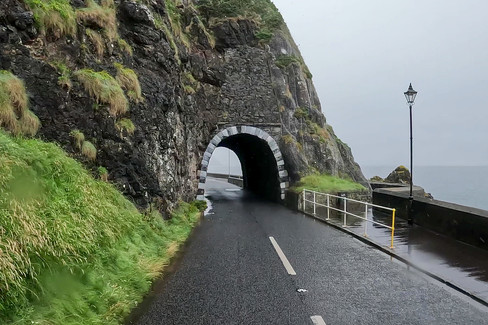



















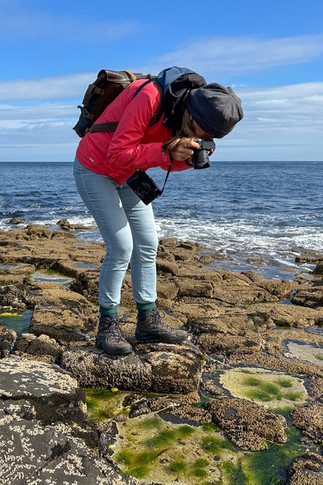



































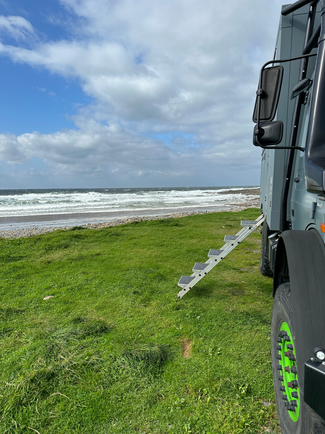

















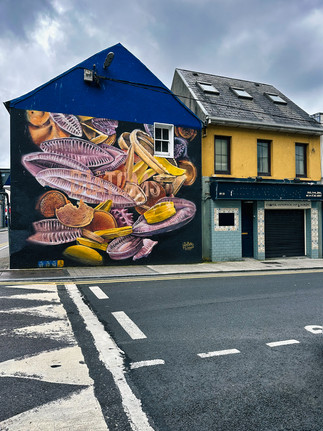














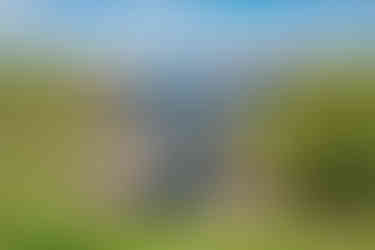






























Comments